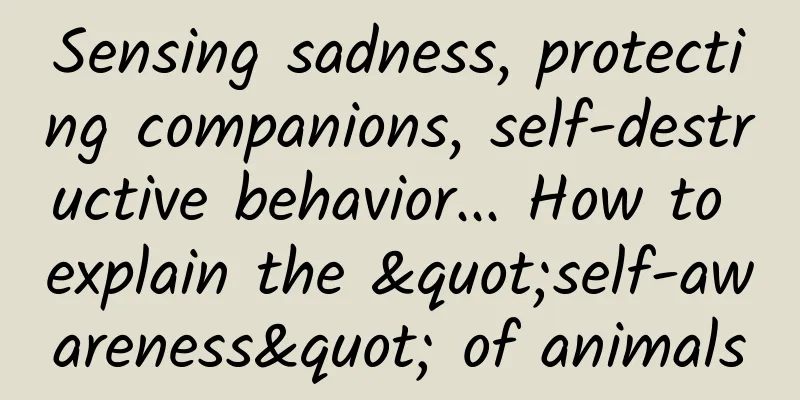Where does a spacecraft go when it retires?

|
Recently, the Tianzhou-3 cargo spacecraft re-entered the atmosphere in a controlled manner after completing its mission. Most of the spacecraft's components were burned, and a small amount of debris fell into the designated waters of the South Pacific, thus announcing the successful completion of the Tianzhou-3 mission. So, what are the ways to deal with the retired spacecraft currently in space? The last image sent back by the Tianzhou-3 spacecraft before it crashed There are many benefits of re-entering "cremation" The Tianzhou-3 spacecraft successfully reentered the atmosphere and burned up, which is the most common way to decommission a spacecraft. All kinds of spacecraft in low-Earth orbit, whether they are communication satellites, remote sensing satellites, meteorological satellites, manned spacecraft, cargo spacecraft and space stations, generally choose to reenter the atmosphere and burn up after their service life expires. Reentry cremation refers to the passive or active change of orbit to lower the orbital altitude and re-enter the atmosphere at the end of the life of the spacecraft. Since the spacecraft in low-Earth orbit flies very fast, the intense friction with the atmosphere when re-entering the atmosphere, the high temperature and high pressure will destroy the re-entering spacecraft, so most of the parts will be completely burned in the atmosphere. For most spacecraft, only a very small number of high-temperature resistant equipment can fall to the earth, so the re-entry cremation method solves the problem of spacecraft retirement disposal once and for all. If the spacecraft is too large and heavy, there may still be a lot of debris that has not been completely burned. These "aliens" that fall to the earth at high speed are completely a disaster for people. Fortunately, the landing point of the uncontrolled reentry of the spacecraft is random, and most areas on the earth's surface are still sparsely populated. So far, there has been no case of casualties caused by the reentry of a spacecraft. In order to reduce the threat of remaining debris after the spacecraft re-enters and is cremated, it is best for the spacecraft to actively and controlledly re-enter and land in an uninhabited area. There happens to be an area on the earth that is not only vast and sparsely populated, but also has few sea and air routes. It is the vast South Pacific Ocean. There is a location in the middle of the South Pacific Ocean called Point Nemo, which is more than 2,600 kilometers away from the nearest continent. You can imagine how vast the empty sea area around Point Nemo is. Controlled reentry spacecraft, such as my country's Tianzhou series cargo spacecraft, generally choose to be cremated over the uninhabited South Pacific Ocean. In 2001, Russia's Mir space station also re-entered and burned over the South Pacific Ocean. In the future, the huge International Space Station also plans to be cremated in this area to minimize the threat and harm to humans. Satellite "Sky Burial" orbit is high Re-entry cremation is a relatively clean process, but it is not the only way to decommission a spacecraft. For medium and high orbit satellites, it is impossible to re-enter the atmosphere at the end of their life due to the limitations of their propulsion system performance. They are usually "sky buried." The most typical example of sky burial is the geosynchronous orbit satellite. In 1997, the International Space Debris Coordination Committee formulated a regulation to better deal with geosynchronous orbit satellites, requiring countries to upgrade their orbits to a graveyard orbit 300 kilometers above the synchronous orbit before the satellite dies. Satellite sky burials can free up valuable geosynchronous orbital positions, avoid orbital collisions between dead satellites and normal satellites, or impacts caused by fragments of the explosion of dead satellites, thereby ensuring the normal operation of geosynchronous orbit satellites. As we all know, in low-Earth orbit, the spacecraft's orbit altitude will slowly decrease due to the drag of the upper atmosphere, which is also the fundamental reason why the Tianzhou spacecraft chose to reenter and burn. On the contrary, the situation in high orbit is different. In synchronous orbit and higher graveyard orbit, the influence of atmospheric drag is very small, while the gravitational perturbation of the earth's non-spherical surface and the sun and moon becomes the mainstream. The gravitational perturbation brings about periodic changes in orbit altitude. For satellites with eccentricity less than 0.003, the orbit altitude deviation generally does not exceed 35 kilometers. The radiation pressure of sunlight will also cause disturbances, but this is related to the satellite's reflection coefficient, reflection area and mass. Considering the influence of the Earth's aspheric surface, three bodies and solar pressure, the height difference of 300 kilometers is enough to ensure that dead satellites entering the graveyard orbit after retirement will not interfere with the normal operation and maneuvering of synchronous orbit satellites for hundreds of years or even longer. In short, satellite sky burial is actually sending it into a grave orbit with a higher orbital altitude, which is equivalent to burying the garbage on the ground, except that the burial altitude in space is higher. Although sky burial is not the best way to completely solve the problem of retired spacecraft, it will not interfere with the normal working of satellites in the short and medium term. After all, the height of this space cemetery is high enough. Clean-up and utilization are being realized Whether it is the cremation of controlled re-entry in the Earth's low-Earth orbit, or the sky burial in the high-orbit synchronous geostationary orbit, these are methods that have only been available in recent decades. Since humans entered space in 1957, the Earth's orbit has long been filled with various types of abandoned spacecraft and orbital debris. Some abandoned spacecraft in low orbits may still have the hope of reentering and burning up after dozens or hundreds of years due to atmospheric drag, but abandoned spacecraft and debris in high orbits have no chance of disappearing, and active spacecraft may be retired due to malfunctions and unable to actively adjust their orbits. Therefore, active removal technology for space junk has been put on the agenda under this situation, opening up a new path for the retirement of spacecraft. Currently, the world's major space powers are actively researching technologies for the active removal of space junk and orbital debris. The European Union is actively promoting the development and testing of technologies for the active removal of orbital debris under the "Clean Space Project". In 2018, ESA launched the RemoveDEBRIS experimental platform to test four clean space technologies, including fishing nets, navigation systems, harpoons and drag sails. The first three tests were successful. Japan is also actively trying to clean up orbital debris, including the HTV-6 cargo spacecraft's attempt to use a metal rope to absorb and decelerate, and the commercial company Astroscale's successful ELSA-d simulated capture test. Now, Astroscale has also received a contract from the UK Space Agency to remove a retired satellite from low-Earth orbit in 2025. The United States has also proposed a variety of ideas for cleaning up abandoned spacecraft, including orbital debris. The U.S. Space Force has invested in technology to actively remove orbital debris, but has not yet conducted specific space tests. Treating retired spacecraft as garbage is one way to solve the problem. The Defense Advanced Research Projects Agency has also proposed another idea, which is to reuse retired spacecraft and turn waste into treasure. The Phoenix Project of the US Defense Advanced Research Projects Agency aims to study the use of retired spacecraft and reuse their still working parts to form new spacecraft. The typical concept of the Phoenix Project is to reuse the large antennas of geostationary orbit communication satellites. This recycling concept is equivalent to donating remains, which is also a unique way to deal with the retirement of spacecraft. |
<<: It can make you sweet, but it can also make you acutely poisoned...
Recommend
For every extra hour you sit, a slim waist disappears from the world
Friends, are you sitting now? Do you know that &q...
As a community operator, do you still want to stick with it?
I think there is some truth to these three doubts...
There are four plants that grow in the desert and have strong vitality. How many do you know?
Everyone knows that in some desert areas, the tem...
How to promote Kuaishou? Share the promotion method of Kuaishou live broadcast!
How to promote Kuaishou live streaming ? In 4 yea...
What kind of smartphone do we need in 2015?
January 29 (Reporter Zhang Zhichang) At the fourt...
How does information flow advertising grasp user psychology? Use these 13 copywriting skills right away!
In information flow advertising consultation, the...
Will rubbing your eyes often make you blind? No kidding! Pay attention to these things
Reviewer of this article: Xu Qibin, associate chi...
Zhihu product analysis report!
As China's largest comprehensive content comm...
Volkswagen emissions scandal executives plead guilty in US, could face 169 years in prison
According to Reuters, U.S. District Court spokesm...
Fireflies are in their best viewing season! It turns out that they glow not only for courtship...
In the hot summer, it is the time of the year whe...
Humen is recruiting with high salary, SEM manager/supervisor, information flow optimizer, SEO manager, public account operation, copywriter...good opportunity for job hopping!
Recruitment position: 1 SEM bidding manager Salar...
What is the future of Silicon Valley people after they turn 35? Are there great opportunities for entrepreneurship?
[[153556]] Similar to Silicon Valley, we also hav...
If you often wake up in this sleep stage, do you have the chance to become a genius?
Researchers have discovered the secret to the suc...
Do you get angry easily? Do you always suppress yourself? Here are 5 tips to help you master your emotions!
Joy, anger, sorrow, thought, sadness, surprise, a...
Android source code download: Five-piece elimination game
Functional classification: Leisure and puzzle Sup...









